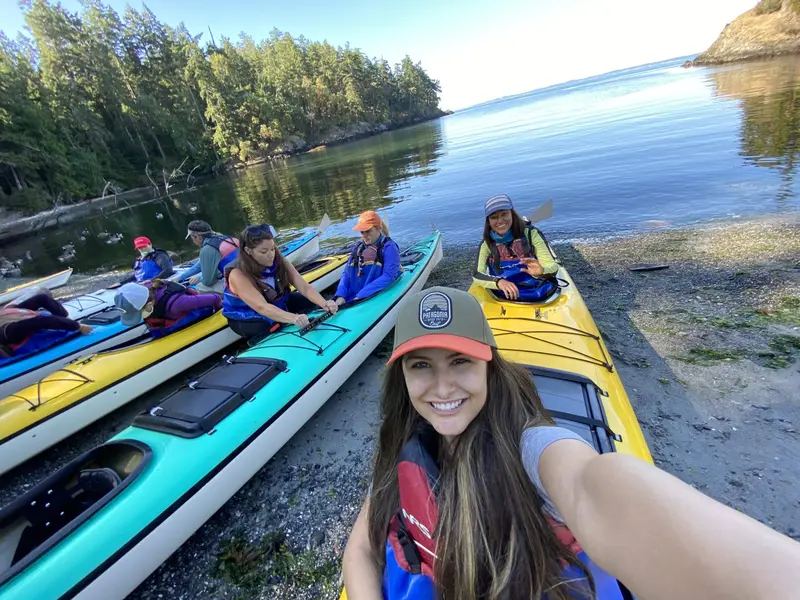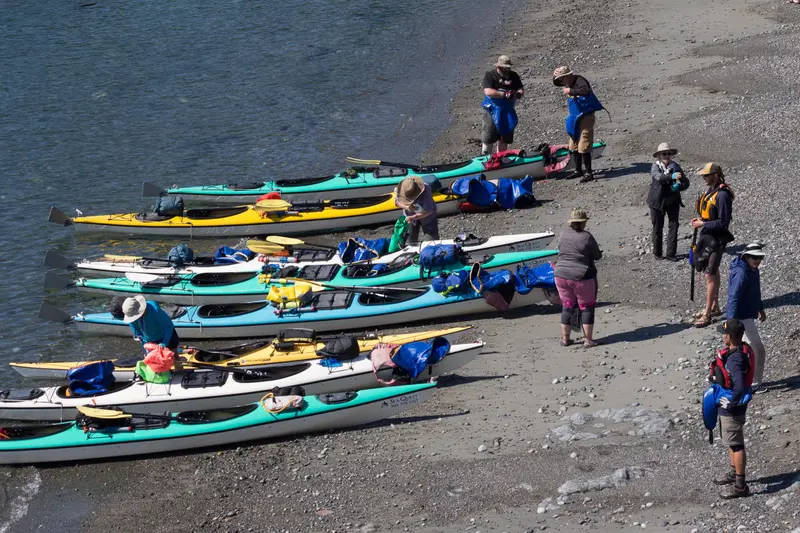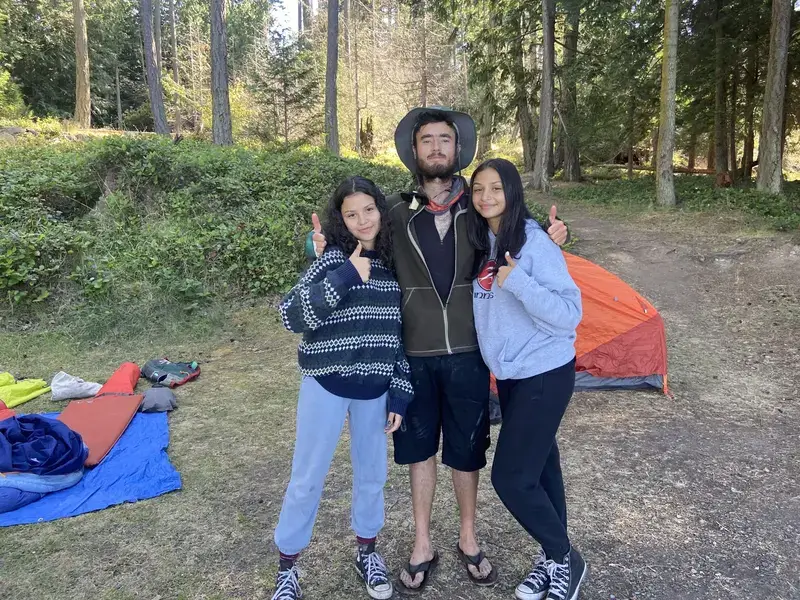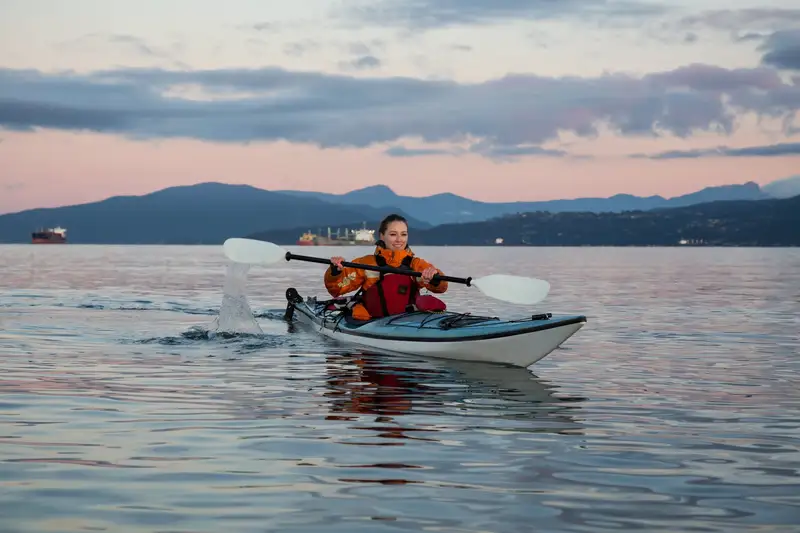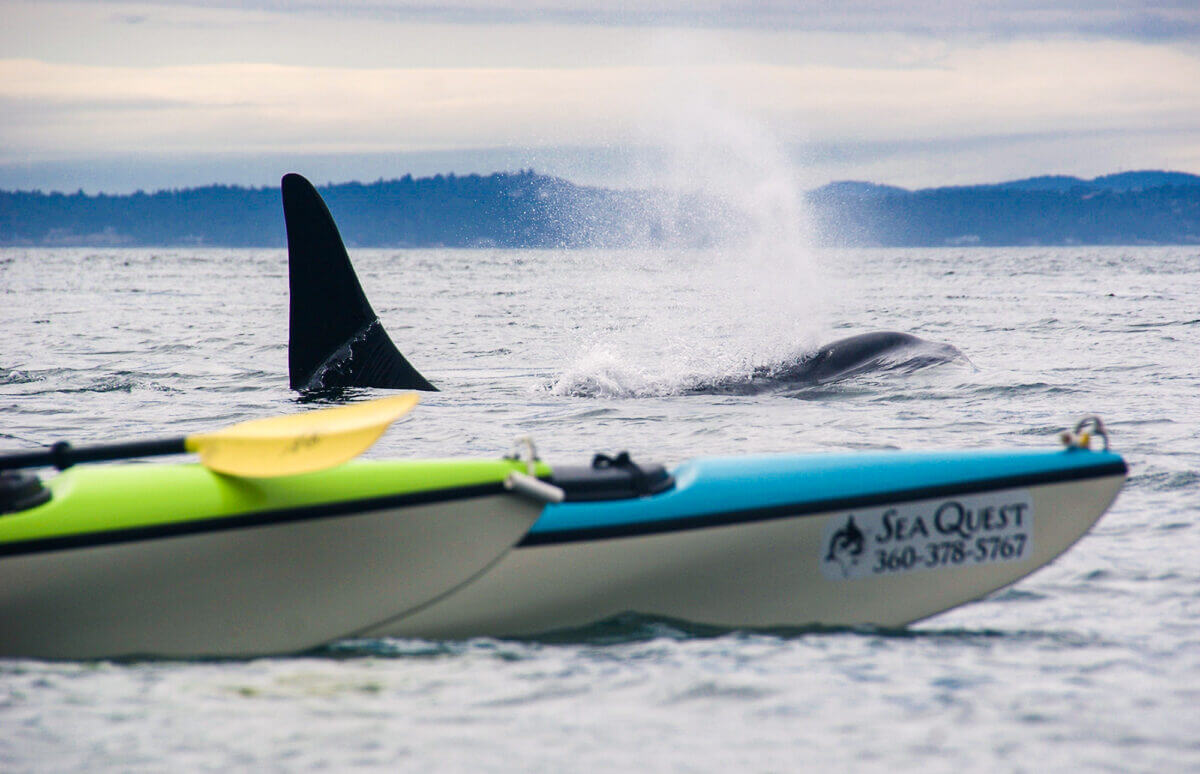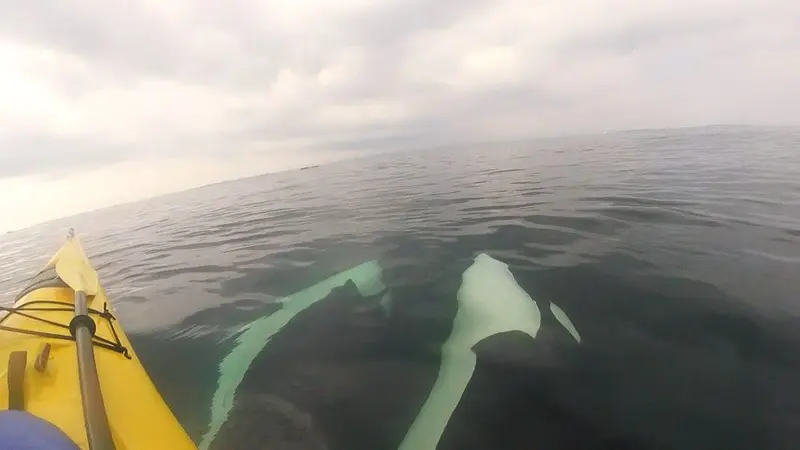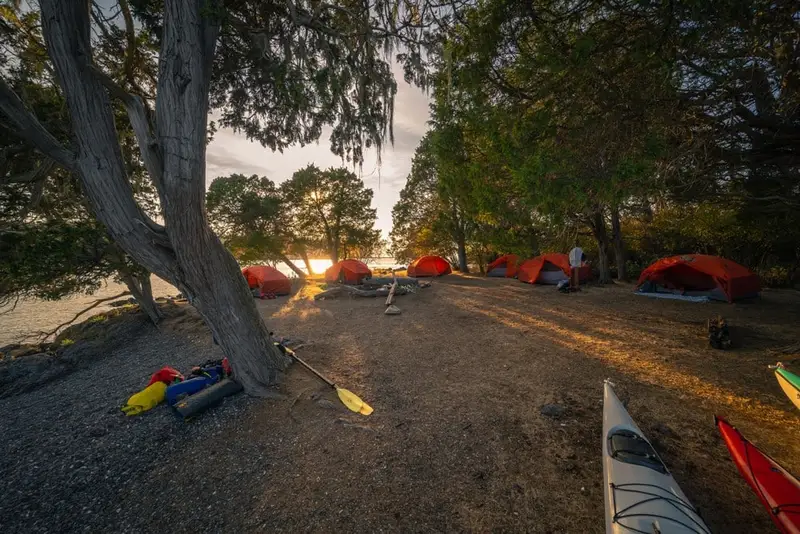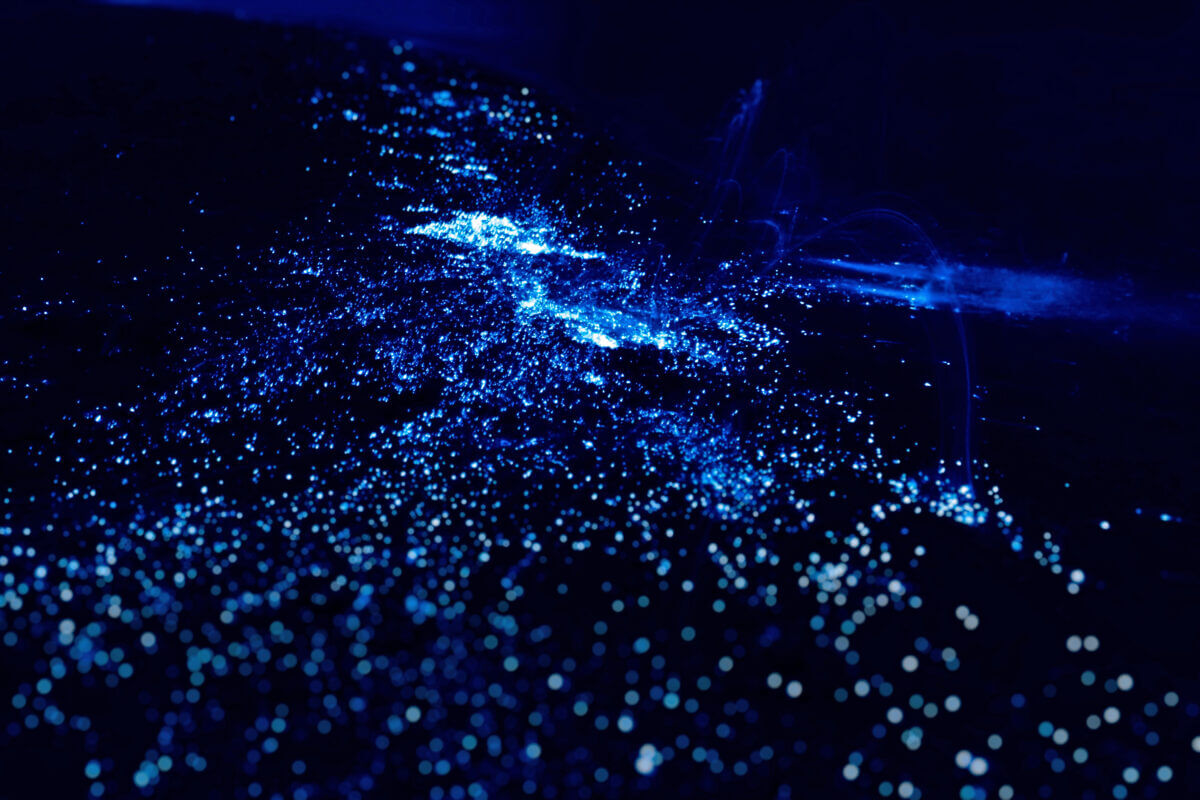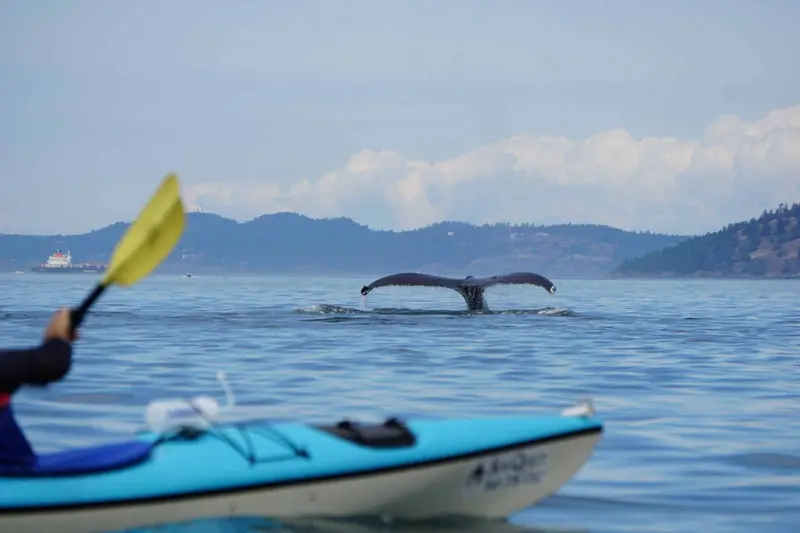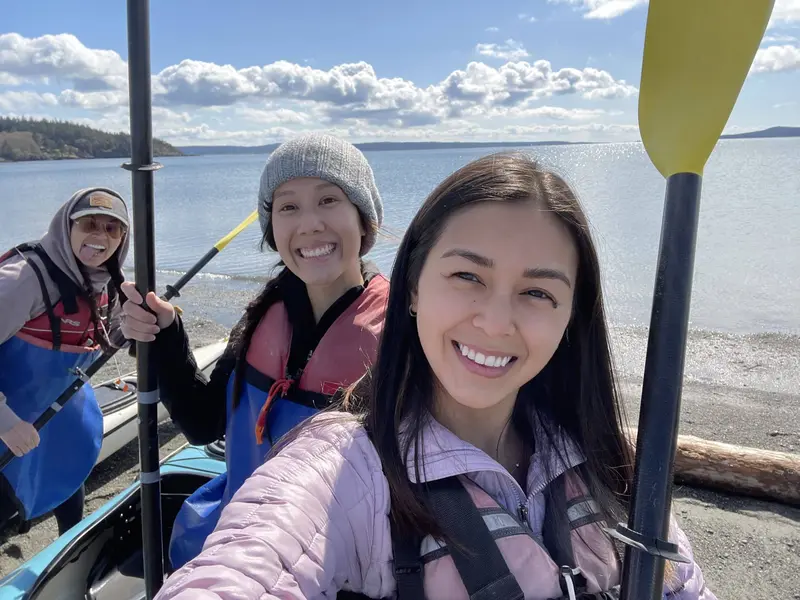July was a great month for our killer whale watching kayak tours in the Salish Sea of Washington state. And our whale watching luck in the San Juan Islands has carried right through into August. As of August 17th the local orca whale pods have been sighted in the Salish Sea for 80 straight days – that must be a record!
Our San Juan Islands kayaking tours found orcas almost every day in July, same as in June.
We encountered killer whales on 89% of the camping trips!
- All of our 5-day San Juan kayak expeditions saw orca whales.
- All but one of the 3-day San Juan kayaking trips found killer whales
- All but one of the 2-day San Juan kayak tours found the orcas.
- All of the above camping trips saw either Dall’s porpoise or harbor porpoise, the smallest members of the toothed whale group, a worthy consolation for the only two camping trips in July that missed seeing the orca whales.
- The 1-day San Juan kayaking trips succeeded in finding cetaceans on 4 out of 5 of the trips in July, with killer whales seen on 2 out of 3 afternoon trips.
Here are some more observations and news about our resident-type (salmon-eating) killer whales in the San Juan Islands from the month of July:
- J-pod spent the entire month in the Salish Sea and this is the orca family group we saw the most on our San Juan Island kayak tours in July. Their 3 young energetic calves are always a treat to see – and quite cuddly at approximately 500 pounds now!
- K-pod is the orca whale family we typically see the most of in July. But this year something unexpected and unexplained has happened – they left the Salish Sea to spend nearly the whole month of July off the coast of Washington and Vancouver Island.
- L-pod is the largest killer whale family in the resident community. They spent most of July traveling through the San Juan Islands split into two subgroups.
- On July 24th a female in L-pod was seen carrying a dead harbor porpoise on her snout for five hours. She did not play with or toss the porpoise around, nor did she eat it. It remains a mystery as to what exactly transpired!
Food for the orca whales has been much more abundant this year compared to most of the prior decade. Previous blog entries have discussed the importance of chinook salmon as the primary prey species of the resident-type killer whales and we have good news on this front – nearly 300,000 chinooks migrated up the Columbia River this spring. This rates as one of the top 3 runs of this endangered species since the Bonneville Dam was constructed in 1938, the year when the majority of fish were blocked from their traditional spawning grounds and a massive multi-decade decline began. Biologists also report that an unusually high number of sockeye salmon has passed Bonneville Dam this spring, with the count of more than 270,000 sockeyes ranking as the highest since 1955.
The size of the spawning runs reflects a variety of factors, including plankton and baitfish productivity in the ocean. It appears that we are in the cooling phase of the North Pacific Ocean Decadal Oscillation, a decade long cycle that swings from cool to warm and back again. The cool phase is related to massive boosts in ocean productivity and gives some threatened species a chance to recover. Our orca whale baby booms correlate closely to the cooler phases of this cycle. Many seabirds that rely on baitfish are also experiencing a reprieve this year from their relentless and alarming declines over the past two decades. How long will their luck continue without humans making a serious effort to undo the damages we have wrought on the marine ecosystem?
The San Juan Islands are home to a year-round population of chinook salmon and sit directly in the path of migrating coho, sockeye, chum, and humpback salmons. This makes the San Juan Islands a very special habitat for the orca whales and the best place in the United States for kayaking with killer whales.
Join a Kayak Quest for Whales in the San Juan Islands of Washington
Photo credit to San Juan Island whale watching captain par excellence Jim Maya.

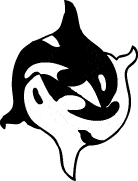
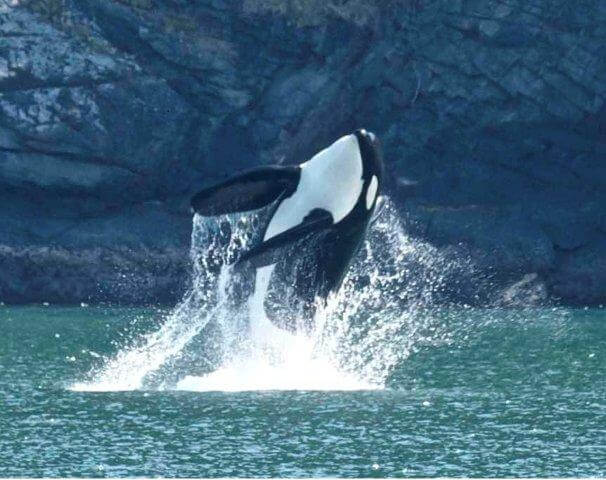 We encountered killer whales on 89% of the camping trips!
We encountered killer whales on 89% of the camping trips!